
 |
|||
| WJ-CEI Home Page | My Publications | Research Material Donations | Bio and Contact |
Communication Electronics, Inc |
Bethesda and Rockville, Maryland |
| CEI Main Page | CEI Receivers | CEI History | CEI Related History | CEI Documents |
| CEI-WJ receivers and tuner guide |
CEI-WJ surveillance system guide |
CEI-WJ spectrum display guide |
WJ- CEI Receivers |
CEI 357 and Related VLF Receivers |
| Front | Inside top | Back | Nixie display | Production data |
| Front center | Front right | LO module | 1966 CEI catalog (for the 351 see pps. 9-10) | |
| Front left | Inside bottom | IF filter | 1970 WJ catalog (for the 357, see p. 7) | |
| basic configuration data for models in the series | CEI/WJ Receivers and Tuners | |||
| Thanks to Peter De Coninck - 357 (R1401A/G) photos |
 |
The 357 is one of the greatest VLF-LF receivers ever made. The basic design was released as a series receivers with different tuning indicators and other features (details here). The 357 and the R-1401 military version are the most common. Production of this radio continued until well after the California microwave company Watkins-Johnson purchased Communications Electronics, Inc. The 357 tunes 1-600 kHz with AM-USB-LSB and great IF bandwidths of 150 Hz, 1, 3 & 6 kHz. Other versions may have different IF bandwidths. I have used a 357 side by side with the legendary Collins R-389 and it gave up nothing in terms of sensitivity. The extreme weight of the R-389 proved an asset only when near powerful AM broadcast stations. The Nixie tube frequency display is particularly nice, a big improvement over Veeder Root mechanical counters and zero beat calibrators. The front panel is well laid out and operation is self-explanatory, except for the DAFC - Digital Automatic Frequency Control. When activated, the DAFC locks the tuned frequency to the crystal timebase in the counter for exceptional stability. This method gives you the stability of a digital radio and the quiet analog circuitry and ease of tuning. The 357 sold for $4200 in 1967, which was about the cost of five brand new VW beetles. Nevertheless it is one of the more commonly available older CEI radios because the US government purchased many in many stripes (see below). |
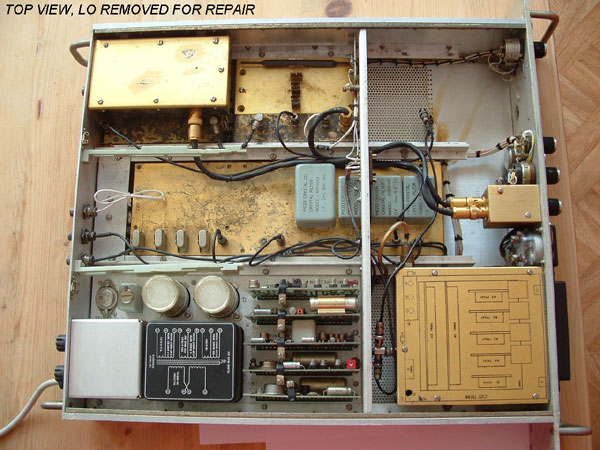 |
The 357 is unusual for its 2 MHz IF strip (center with blue filters). It actually has two separate IF strips, one for the signal and a second for noise detection and suppression. Everything is modular and heavily shielded, typical of CEI and WJ equipment. |
 |
The antenna input (upper left) is unusual for the switchable 50 or 1000 ohm input. The 340 receiver, which replaced the 357, had a similar arrangement but used a separate triaxial BNC connector. CEI made a 2 MHz input SDU, the SM-8421 - a $2500 accessory in 1966 dollars), to match the 357. |
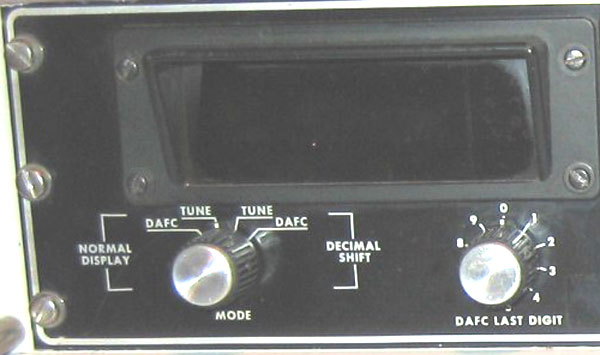 |
The Nixie tube digital frequency display is located on the left side of the front panel. In standard mode it reads to 100 Hz accuracy. In decimal shift, it reads to 10 Hz accuracy. The "DAFC LAST DIGIT" control selects the 100 Hz increment you wish to lock onto (or 10 Hz in decimal shift mode). The DAFC locks the receiver to the crystal oscillator in the counter timebase. |
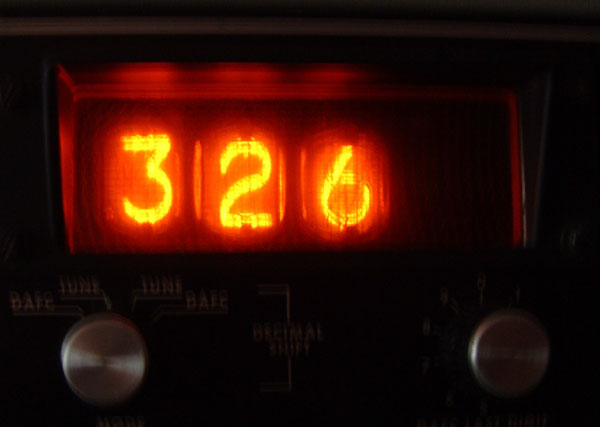 |
Nothing beats a Nixie tube for a pleasant attractive readout. Nixie tubes are neon filled vacuum tubes with wire electrodes in shapes that light up when a high voltage is applied. Very cool. |
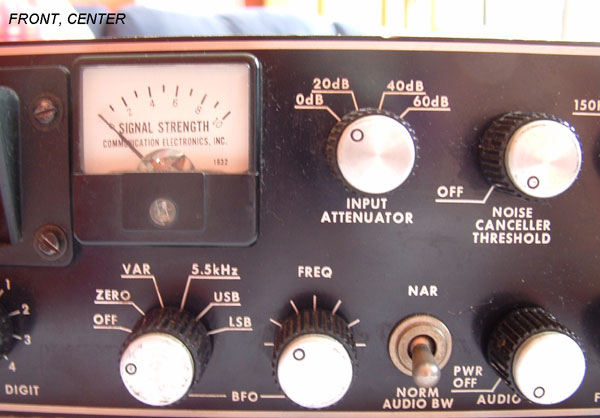 |
There are many controls on the narrow front panel, but well laid out are very usable. The noise canceller is much more complex than most noise limiters, boasting its own IF strip and a gate circuitry rather than the usual simple impulse limiting diode. |
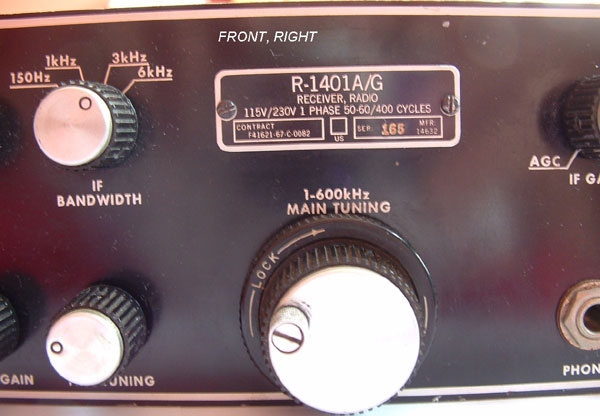 |
The R-1401A/G is the 357 produced for the National Security Agency (NSA). It is one of many variations ordered by the US government. |
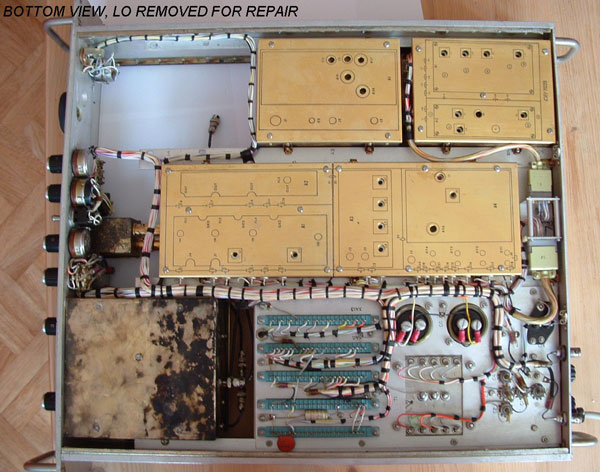 |
The bottom reveals the extraordinary attention to detail in the design and construction typical for CEI and WJ radios. |
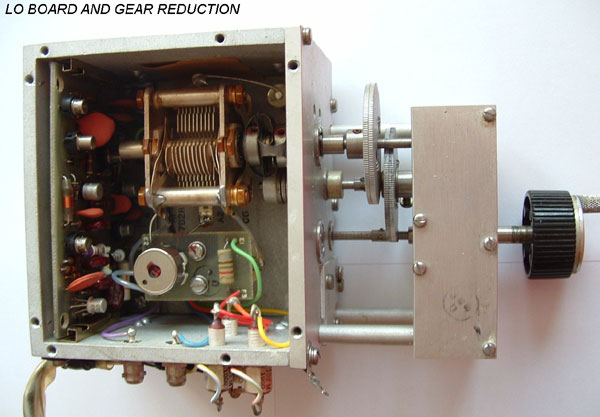 |
The tuning mechanism relies on a variable capacitor with a varactor for fine ruining and DAFC control. |
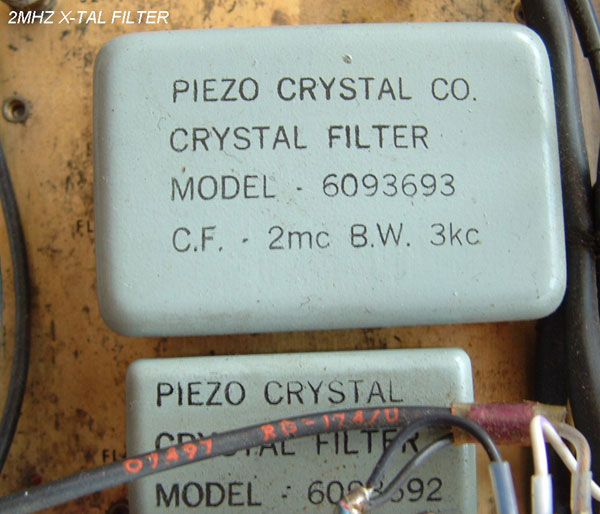 |
The 357 has four crystal filters for excellent selectivity. The 2 MHz center frequency is unusual. |
CEI/WJ model |
Nomen-clature |
National Stock Number (NSN) |
Who |
MM/ YY |
Provisioning Specification |
Contract |
| 350A | R-1449/ WLR-6(V) | 5895-00-494-0033 | ||||
| 351 | R-1401/G | NSA | 09/66 | PP-LYN-EM-2A | ||
| 351 | R-1401/G | NSA | 09/66 | PP-LYN-PS-4A | DA18-119-AMC-02542(X) | |
| 354 | 5820-00-332-8081 | |||||
| 355-1 | 5820-00-499-1706 | |||||
| 357 | R-1401A/G | 5820-00-833-0156 | NSA | 11/66 | PP-LYN-EM-2A | F41621-67-0082 |
| 357 | R-1401A/G | 5820-00-833-0156 | NSA | 11/66 | PP-LYN-PS-4A | DA18-119-AMC-03397(X) |
| 357-1 | R-1401B/G | 5820-00-136-8451 | ||||
| 357-11 | R-2056/G | 5820-01-023-0237 | ||||
| 357-8 | R-1687/G | 5820-00-195-4378 | NSA | 06/70 | PP-LYN-PS-4B | |
| 357-8 | R-1687/G | 5820-00-195-4378 | NSA | 06/70 | PP-LYN-EM-2B | DAAB03-70-A-0020 |
This is an incomplete listing of production data for radios based on the 357 circuit design. Brief configuration data on the different models is available below. |
Model |
Bandwidths |
Display |
Price/Year |
Notes |
| 351 | 0.15, 1, 3 and 6 kHz | digital - Nixie tubes | $4,000/1967 | |
| 351-1 | 1, 6, 20 and 50 kHz | analog - filmstrip | ||
| 354 | 0.15, 1, 3 and 6 kHz | analog - filmstrip | $2,500/1967 | |
| 355 | 1, 6, 20 and 50 kHz | analog - filmstrip | $3,000/1967 | |
| 355-1 | 1, 6, 20 and 50 kHz | analog - filmstrip | $3,200/1967 | adds X-Y plotter out |
| 355-2 | 1, 6, 20 and 50 kHz | analog - filmstrip | $3,700/1967 | adds rechargeable batteries |
| 357 | 0.15, 1, 3 and 6 kHz | digital - Nixie tubes | $4,200/1967 | like 351 w/noise canceller |
| More details on some of these variations can be found in the WJ Receivers and Tuners Guide, the 1966 CEI catalog (for the 351 see pps. 9-10), and the 1970 Watkins Johnson Receiver, Receiving Systems and Ancillary Equipment Catalog (for the 357, see p. 7). The basic construction and circuitry are identical on all models. The chassis layout is identical as well, except for the R-1449/WLR-6(V) which is built from the 350A receiver. |